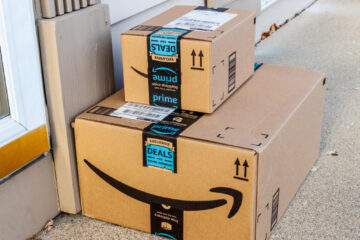The fast-food giant is fixing one of its biggest problems and that may cause its chief rival to take notice.
Chipotle (CMG) – Get Free Report quietly took over the top spot among Mexican fast-food chains by using a very different recipe (so to speak) from its chief rival Yum Brands (YUM) – Get Free Report Taco Bell. Basically, the newer player in the quick-serve/fast food/fast casual space decided that prices were not going to be its driving factor. Instead, Chipotle built its menu around the idea of using well-sourced, more natural food.
That was a successful plan until the company’s e. Coli scandal back in 2016 where the chain sort of fell victim to its own marketing. Fresher food comes with higher risk, and when people got sick at Chipotle, a lot of other fast-food chains sort of pointed to their less fresh, more processed foods as being a safety choice.
Customers, however, stuck by Chipotle which increased its safety protocols while doubling down on the idea of using fresh food and better-quality ingredients. That helped the company grow its business to its current position where consumers simply accept Chipotle’s products as worth more than what most fast-food chains offer.
That has allowed the chain to charge higher prices and offer very few deals. Taco Bell does not enjoy a similar relationship with its customers. One of its key marketing points has been offering a lot of food cheap.
Chipotle has also distinguished itself by offering fresh guacamole prepared in its stores. That’s an expensive, laborious process that has left the company vulnerable to fluctuating avocado prices and fears of shortages of the key ingredients. Taco Bell has never been known for its guac, and the company has never claimed to make it in store or really said much about it.
Now, however, that’s going to change as Taco Bell has big plans to up its guacamole game.
Joe Raedle/Getty Images
Taco Bell Adding Fresh Guacamole
It might be fair to credit Chipotle with the explosion of guacamole’s popularity in the U.S. It’s not that it never appeared on Mexican restaurant menus, but now tableside guac preparation has become a staple at nearly every sit-down Mexican restaurant.
Taco Bell has used guac as an ingredient but has never really focused on it. Now, the chain has a new guacamole recipe that it says it’s preparing “fresh daily,” according to a report from Fast Food Post.
“Chunky, yet spreadable and dippable, Taco Bell’s new Guacamole is prepared fresh daily and features real Hass avocados with bits of diced tomatoes, crisp onions, and a seasoning sauce with hints of lime. Additionally, it’s also an American Vegetarian Association-certified vegan menu item with only 80 calories per 1.6-oz serving,” the website shared.
The new guacamole recipe is being used on the chain’s 7-Layer Nacho Fries and Burrito as well as on the Fiesta Veggie Burrito and the Power Menu Bowl. You can also add the topping to any menu item for $1 (although prices may vary by location).
Chipotle charges $1.95 to add guac to any menu items that don’t already include it (or if you want extra).
Taco Bell and Chipotle Operate Very Differently
While Chipotle has built its business on food quality, Taco Bell has gained market share by being innovative. The chain regularly changes its menu and it has not been bound by any standard definition of Mexican. Taco Bell, for example, has built a big following for its Mexican Pizza and Nacho Fries, two items which would hardly be considered traditional.
Chipotle, on the other hand, has struggled with its queso recipe because the cheese sauce/dip/topping generally uses processed cheese, which is against the chain’s policies. Taco Bell has no such rules which has allowed it to feature new flavors of Mountain Dew, a variety of limited-time menu offers, and even chicken wings for a week.
Fresh guacamole, however, has been a big driver for Chipotle and Taco Bell entering that space (at a cheaper price) may drive customers to the cheaper chain. That’s a door Chipotle may have opened as it has not hesitated to pass increasing costs onto its as inflation/supply chain issues have pushed costs higher.


